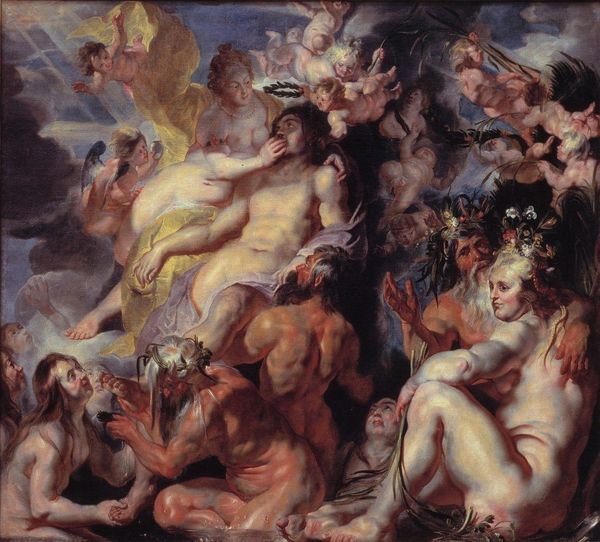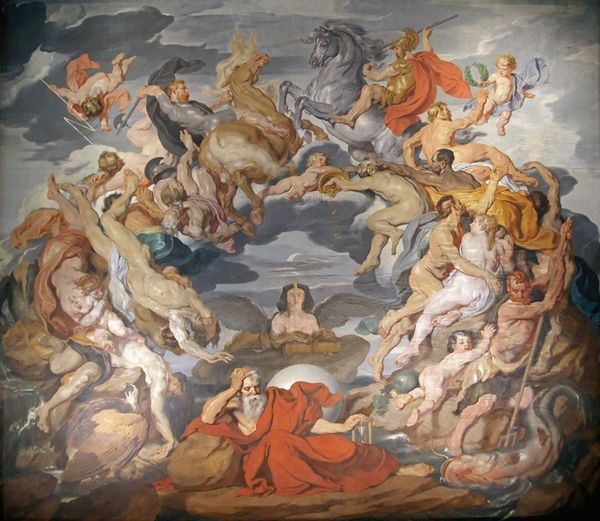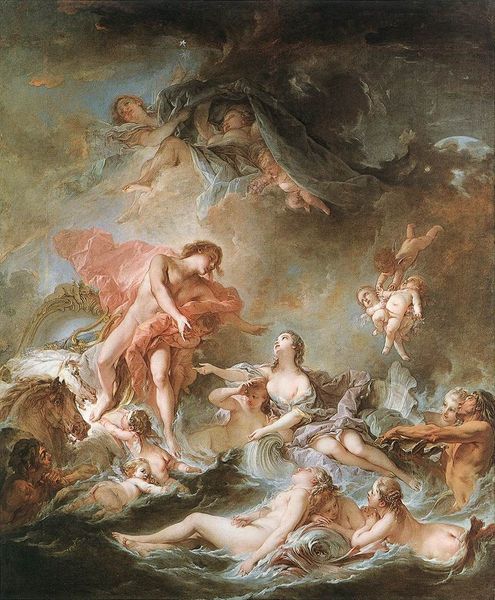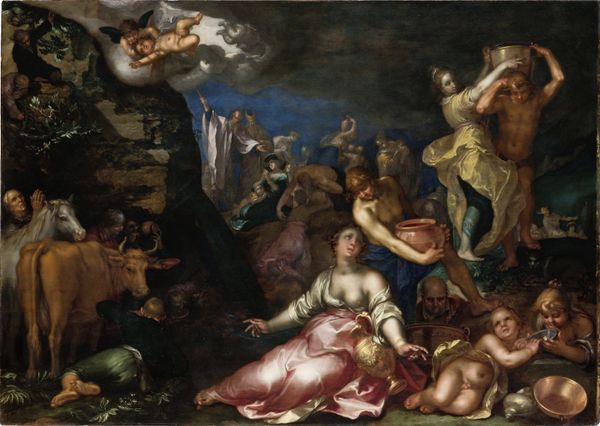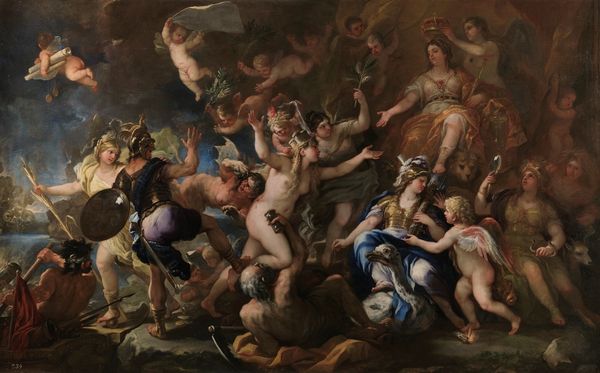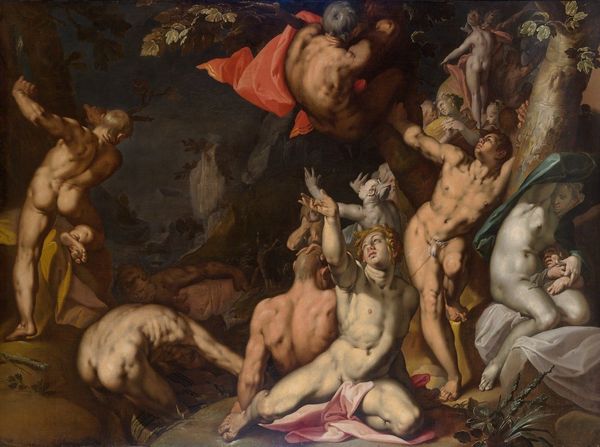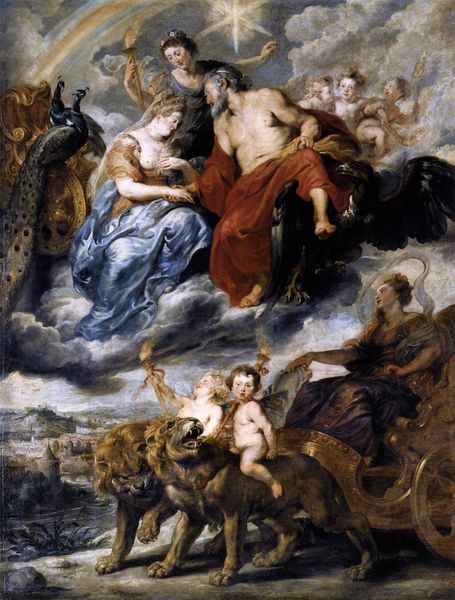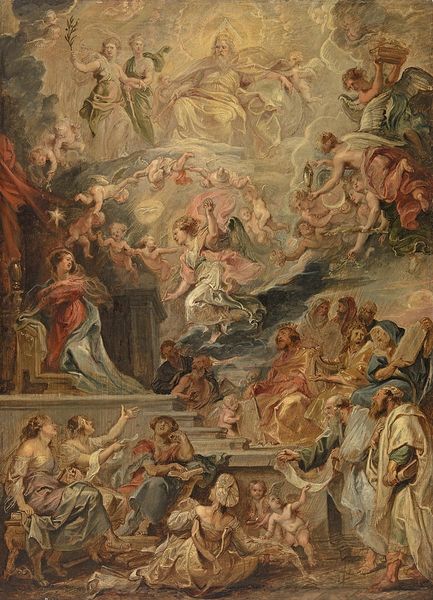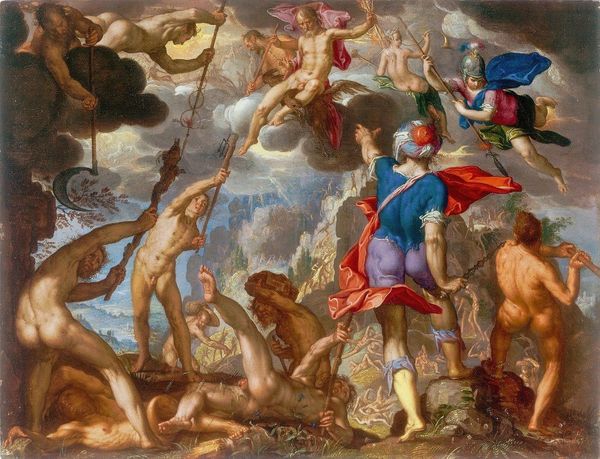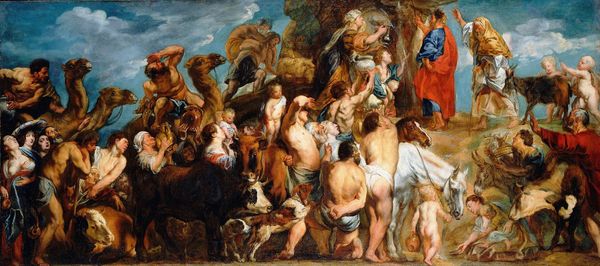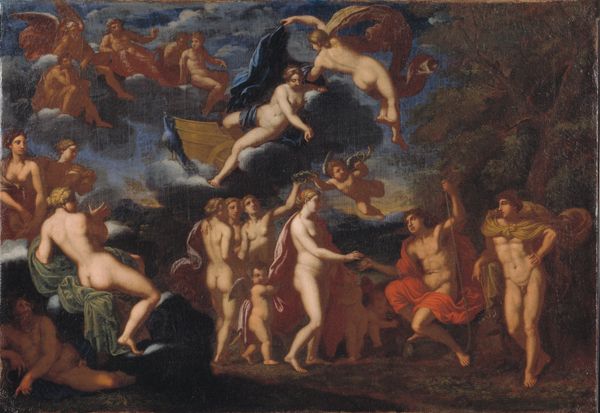
painting, oil-paint
#
allegory
#
baroque
#
painting
#
oil-paint
#
figuration
#
oil painting
#
history-painting
#
nude
Copyright: Public Domain: Artvee
Curator: Whoa, this piece—Rubens’ “The Great Last Judgement,” circa 1617—is intense, isn’t it? All that swirling motion...I can almost feel the heat radiating from it! Editor: Yes, the dynamism is remarkable. Note how the artist uses a diagonal composition, dividing the canvas into heavenly and hellish realms. The strategic use of light and shadow heightens the drama. Curator: It's a whole opera in paint, isn’t it? Look at those figures struggling, pleading... some are floating upwards to bliss, others are getting dragged down, kicking and screaming, to who-knows-where. It's a potent cocktail of hope and terror, isn’t it? Makes you wonder what's really important in life, doesn’t it? Editor: Precisely. The artist’s virtuosity lies in his rendering of the human form in extremis—contorted bodies, anguished faces, all conveying a deep sense of existential torment. Rubens’ use of vivid color is critical to creating that effect, don't you think? The bright rosy skin tones in stark contrast with the murky browns, visually represent the transition from grace to eternal suffering. Curator: Absolutely! And there’s Christ up there, almost serene amid all the chaos, like a beacon of peace. Does he look forgiving to you or resigned? Maybe a bit of both? The whole thing reminds me that even the wildest imaginations—think of writers, poets, filmmakers who explore extremes—never quite capture the sheer madness Rubens could conjure on a canvas! It really does get you thinking... Editor: His Baroque sensibilities, the dynamic movement, the dramatic contrasts—Rubens certainly embodies a pivotal moment in art history. The success is the intense visual rhetoric about mortality, judgment, and the human condition. One has to marvel at the lasting power of his creation. Curator: You are so right. I look at "The Great Last Judgement," and, though centuries separate us, I find myself connecting to the universal questions about fate, purpose, fear. Editor: Indeed, and I find that the more you explore the artist’s technique, his mastery of form and composition, the more that visceral connection to Rubens' subject strengthens.
Comments
No comments
Be the first to comment and join the conversation on the ultimate creative platform.

